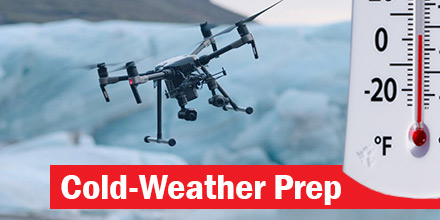
Flying drones in cold weather is not an issue for many operators. After all, there is not much that keeps them from flying, even extremely cold weather.
Besides rain and high winds, a drop in temperature is usually not enough to keep a pilot grounded.
Today, a majority of multi-rotors can withstand temperatures ranging from 32-145 degrees Fahrenheit. For specific thresholds, check the user manual which came with the drone. However, drone operations in cold-weather do require adequate preparation.
Tip #1: Avoid Ice Build-Up
Of course, there are a variety of cold-weather conditions that could endanger a drone's function. However, ice is one of the biggest issues an operator needs to guard against. At all costs, avoid any ice build-up on the device.
If a drone’s wings or propellers become covered by ice, it can alter its load distribution and thereby affect its aerodynamics.
Condensation is of particular concern. In cold-weather flights, freezing air flows over the warm body of the drone which can form into condensation. It can then settle and freeze on the surface of the drone affecting the UAVs flight performance. Furthermore, when the ice melts it can cause further damage by seeping into the drone’s internal electronics.
Tip #2: Keep an Eye Out for Rain
Unless a pilot is aware and confident in the drones overall
IP-rating, it is simply good practice to avoid flying in rainy conditions.
Obviously, drones are machines made up of various electrical components. As such, these components are affected by moisture just like any other electronic. Water can seriously damage motors, camera’s and other parts.
If caught in rain or snow, cease operations immediately and remove any water by wiping down the drone.
Tip #3: Remember the Batteries
Cold weather impacts batteries differently than warm weather. As such, batteries need to be adjusted accordingly.
In cold weather, the chemical response within the battery slows. This results in the reduction of flight time. Depending on the temperature, flight time can reduce by up to 20%. Extreme drops in temperature can also result in a sudden reduction in power. In some instances, extreme temperatures can result in complete battery failure.
Best practices for cold-weather battery care include:
- Fully charge all batteries
- Pack spare batteries
- Store batteries in a warm place
- Hover on the spot after take-off
- Take it easy on the throttle when flying
- Take a portable charger
To get longer life and flying time out of your batteries always ensure they are fully charged in preparation. These and any spares should be stored somewhere warm such as a suitable carrier during transit to avoid degradation.
A sensible idea is to hover "on the spot" for a few seconds after takeoff. This allows the battery to warm up prior to full flight.
Finally, be sure to also take it easy on the throttle during flight and consider bringing in the drone to land once you have less than 30% of power left as a precaution. This is where having spare batteries or a portable charger come in and it helps to guard against any sudden loss of power midair.
Tip #4: Altitude and Local Weather
Another consideration is altitude. Flying in high altitudes means the propellers must spin faster to compensate for thinner air. As such, the batteries drain more quickly which means shorter flight times.
Local weather can also greatly impact the length of drone flight. Areas described as ‘dry’ versus areas with more humidity in their air certainly affect a drones performance.
Ground conditions are another factor. For example, puddles of water of packs of snow can damage a landing drone. In such conditions, weighted sheets can provide a dry surface on which to land - thereby minimizing contact with any moisture.
Tip #5: Don't forget the pilot
Last but not least, it’s a good idea to look after the pilot, as well.
Essential supplies, such as: gloves, goggles, scarves, layers of warm clothes, and hot drinks can keep pilots safe in the elements. Packing extra cloths to wipe down the drone after operations, is also helpful.
Flying drones in cold weather is possible. Simply keep in mind the tips above to ensure a safe, efficient flight...despite the temperature.
 2017 brought some of the most powerful storms of the decade, resulting in over $188 billion in damages.
Just three major storms of the Atlantic hurricane season — Harvey, Irma and Maria — ran up the majority of the damages.
Manned aircraft, though incredibly helpful, are often too large and heavy to land in areas affected by these storms. As such, many aid and relief organizations are looking for unorthodox solutions. Enter drones.
2017 brought some of the most powerful storms of the decade, resulting in over $188 billion in damages.
Just three major storms of the Atlantic hurricane season — Harvey, Irma and Maria — ran up the majority of the damages.
Manned aircraft, though incredibly helpful, are often too large and heavy to land in areas affected by these storms. As such, many aid and relief organizations are looking for unorthodox solutions. Enter drones.

 Flying drones in cold weather is not an issue for many operators. After all, there is not much that keeps them from flying, even extremely cold weather.
Besides rain and high winds, a drop in temperature is usually not enough to keep a pilot grounded.
Today, a majority of multi-rotors can withstand temperatures ranging from 32-145 degrees Fahrenheit. For specific thresholds, check the user manual which came with the drone. However, drone operations in cold-weather do require adequate preparation.
Flying drones in cold weather is not an issue for many operators. After all, there is not much that keeps them from flying, even extremely cold weather.
Besides rain and high winds, a drop in temperature is usually not enough to keep a pilot grounded.
Today, a majority of multi-rotors can withstand temperatures ranging from 32-145 degrees Fahrenheit. For specific thresholds, check the user manual which came with the drone. However, drone operations in cold-weather do require adequate preparation.
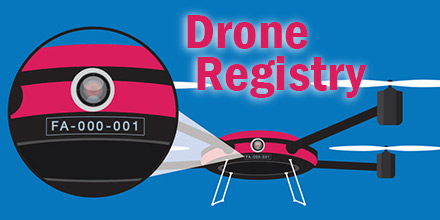 Recently, U.S. Department of Transportation Secretary, Elaine L. Chao, announced that the total number of drones registered with the Federal Aviation Administration (FAA) eclipsed one million.
Chao made the announcement at the annual Consumer Electronics Show (CES) in Las Vegas, NV.
The 1 million registrants include 878,000 hobbyists and 122,000 commercial users. Hobbyists receive one identification number for all the drones they own. Commercial, public and other drones are individually registered.
“The tremendous growth in drone registration reflects the fact that they are more than tools for commerce and trade. Drones can save lives, detect hazardous situations and assist with disaster recovery,” said Chao. “The challenge is to remove unnecessary hurdles to enable the safe testing and integration of this technology into our country’s airspace.”
Recently, U.S. Department of Transportation Secretary, Elaine L. Chao, announced that the total number of drones registered with the Federal Aviation Administration (FAA) eclipsed one million.
Chao made the announcement at the annual Consumer Electronics Show (CES) in Las Vegas, NV.
The 1 million registrants include 878,000 hobbyists and 122,000 commercial users. Hobbyists receive one identification number for all the drones they own. Commercial, public and other drones are individually registered.
“The tremendous growth in drone registration reflects the fact that they are more than tools for commerce and trade. Drones can save lives, detect hazardous situations and assist with disaster recovery,” said Chao. “The challenge is to remove unnecessary hurdles to enable the safe testing and integration of this technology into our country’s airspace.”
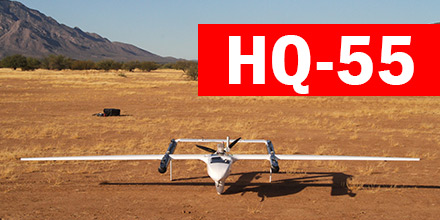 The HQ-55, the newest airframe from
The HQ-55, the newest airframe from 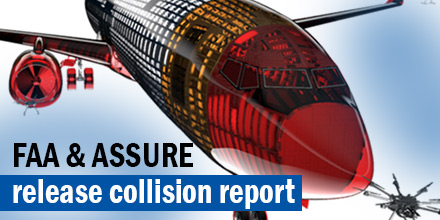 Last October, a research team from the Alliance for System Safety of UAS through Research Excellence (ASSURE) released a
Last October, a research team from the Alliance for System Safety of UAS through Research Excellence (ASSURE) released a 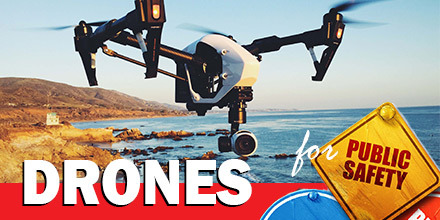 Often, one of the biggest obstacles to the widespread adoption of any new technology is the initial uncertainty of the regulation landscape.
For example, consider the promise of self-driving cars. While the technology is advancing by leaps and bounds, the much-needed test-driving hours are constrained by red tape. Without real-world testing the acceptance and adoption of this technology stalls.
Thankfully, drones are further down the road in terms of both societal acceptance and utilization. As the regulation landscape settles, the largest growth of drones is still ahead.
Today, more and more industries utilize drones to perform functions that were once unimaginable. Public Safety Agencies are beginning to harness their potential, as well. And, though they are some integration obstacles, advanced planning can reduce the pain.
Often, one of the biggest obstacles to the widespread adoption of any new technology is the initial uncertainty of the regulation landscape.
For example, consider the promise of self-driving cars. While the technology is advancing by leaps and bounds, the much-needed test-driving hours are constrained by red tape. Without real-world testing the acceptance and adoption of this technology stalls.
Thankfully, drones are further down the road in terms of both societal acceptance and utilization. As the regulation landscape settles, the largest growth of drones is still ahead.
Today, more and more industries utilize drones to perform functions that were once unimaginable. Public Safety Agencies are beginning to harness their potential, as well. And, though they are some integration obstacles, advanced planning can reduce the pain.
